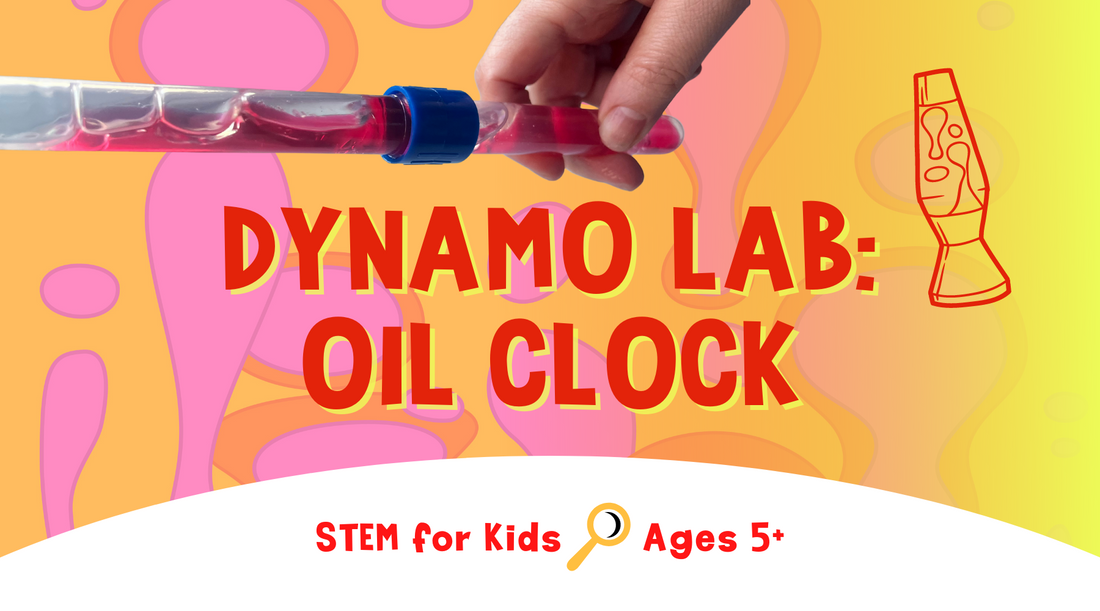Dynamo Lab
Have you ever seen a lava lamp and wondered how the liquid moves from one container to the next? The different color liquid sometimes shapes into spheres and sometimes morphs together to create a big ol’ gloop. Why does it do this how does it work? Why do some liquids mix together easily and others not? Let’s find out by making an oil clock!
The science behind the Mix:
Humans have always been interested in how things mix together. In ancient times, before people knew a lot about science, they would try to create different things like medicines, dyes, inks, and just about anything else by mixing. They made new discoveries by experimenting! We’ll see what water and oil do when mixed together. Do you have a prediction?...
How to Make an Oil Clock:
1. Prepare your ingredients and materials - you’ll need two test tubes, a test tube connector, a test tube stand, a bit of vegetable oil, water, and red coloring agent ( or food dye). You’ll also want to conduct parts of this experiment in water. Prepare a large pot, bowl, or fill up the tube with some water!

2. Set up your two test tubes in the test tube stand - say that three times fast! In test tube #1, add 2-4 drops of red coloring agent (or any color food dye). HINT: a little goes a long way!

4. Add water to test tube #1 until it is half full. Place your thumb over the opening and shake the test tube. After a good shake, add a little more water to test tube #1, almost to the top and shake again.

5. Fill the second test tube with oil almost near the top. Screw the test tube connector onto test tube # 2.

6. This part can be tricky so don't be afraid to ask for help from your parent or friend. close the opening of both test tubes with your thumbs. Submerge the test tubes into a large bucket or bathtub filled with water, and keep your thumbs where they are!
8. Quickly screw both test tubes together. HINT: you've created an air pocket by submerging the test tubes underwater. the air pocket helps keep the red water and oil from coming out of the tube.

9. Once you have successfully screwed both test tubes together, take the combined test tube out of the water. You've created an oil clock! Turn the test tube every few seconds. what do you notice?

It's amazing, it's magical, it's science! you'll notice that the water and the oil never fully mix. this is how we create those interesting shapes and lava lamps.
If a picture is worth a thousand words, how many words describe a video? check out the video to see the oil clock working in action!
What is the Best Science Kit for Kids?
Dynamo Science Lab is a MUST This science kit for kids includes 21 exciting and interesting activities from creating your own lava lamp, to growing crystals, and of course creating an erupting volcano!


